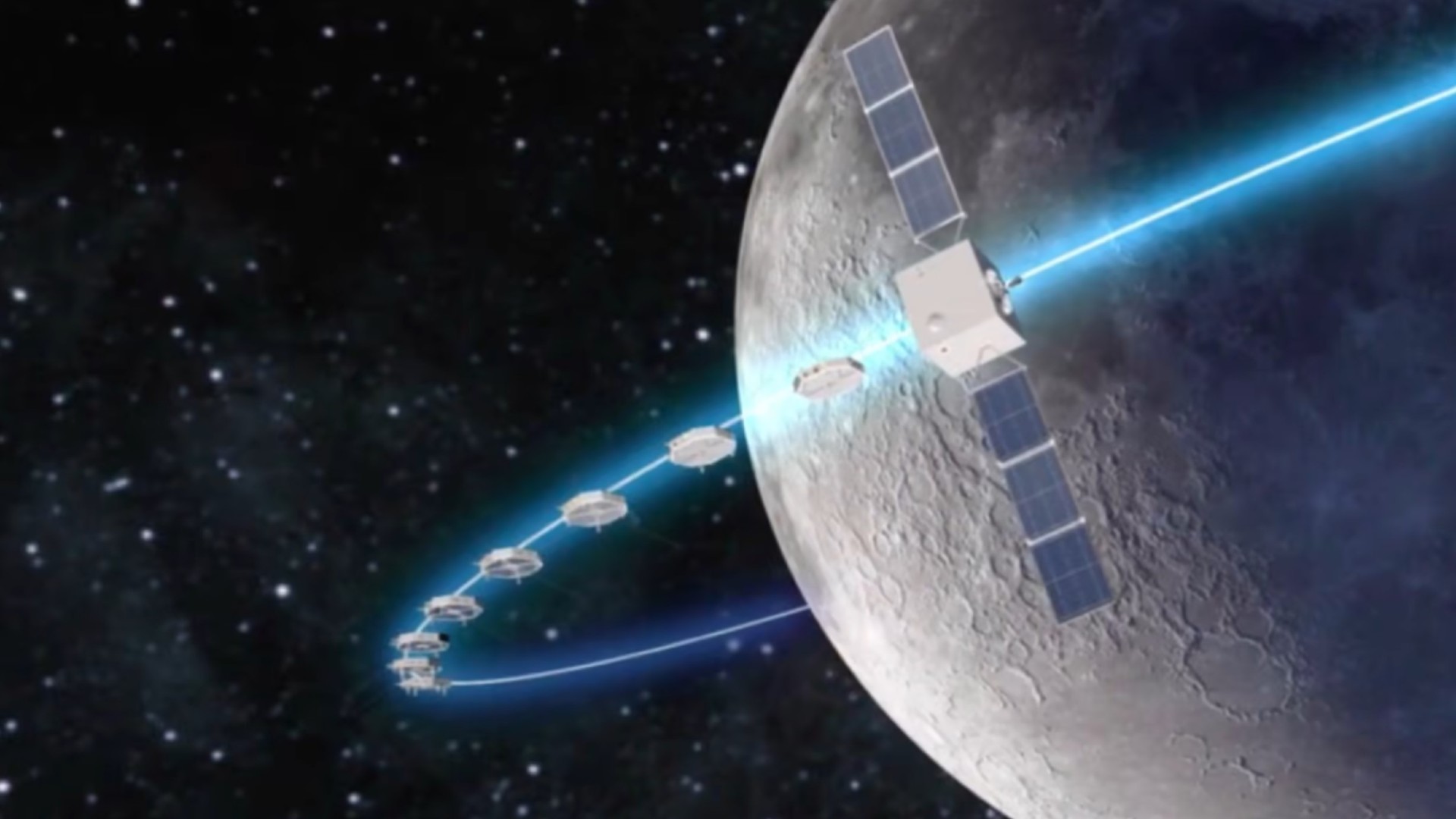China mulls using lunar satellites to probe the cosmic dark ages
A proposed mission aims to use the moon as a shield to pick up faint cosmic signals.

Chinese scientists want to use the moon to help get an unprecedented look at the early, dark days of our universe.
The team behind the Discovering the Sky at the Longest Wavelengths (DSL) mission, also known as Hongmeng, want to send 10 satellites into orbit around the moon to pick up faint cosmic signals, using our celestial neighbor to block electromagnetic interference from human activity on Earth.
The aim is to gain a glimpse at the so-called cosmic dark ages—a mysterious era before the first stars began to shine—by collecting faint, stretched out, ultra-long wavelength light emitted by hydrogen atoms formed by the Big Bang.
Related: The latest news about China's space program
Nine daughter satellites will collect faint signals from the deep universe while orbiting on the far side of the moon, where terrestrial interference will be blocked. A mother satellite will then collect the gathered information from the daughter satellites and beam the data back to Earth when on the near side of the moon.
These low-frequency signals from the early cosmos are very difficult or impossible to receive on Earth due to the planet's ionosphere. The proposal is an innovative alternative to the much more costly and technically challenging route of setting permanent telescopes on the surface of the lunar far side, the South China Morning Post reports, citing Wu Ji, a senior Chinese space scientist.
The mission, led by Chen Xuelei of the Chinese Academy of Sciences (CAS), is one of a number of proposed astronomy, exploration, Earth science, heliophysics and exoplanet missions competing for approval under the Chinese Academy of Sciences' New Horizons Program.
Get the Space.com Newsletter
Breaking space news, the latest updates on rocket launches, skywatching events and more!
DSL could receive official approval in the coming weeks according to the South China Morning Post.
IEEE Spectrum, reporting earlier on DSL, notes that the mission was earlier proposed as a joint Sino-European project but was not selected. The new DSL proposal now has a shot at approval through CAS’s New Horizons program.
Follow us on Twitter @Spacedotcom or on Facebook.
Join our Space Forums to keep talking space on the latest missions, night sky and more! And if you have a news tip, correction or comment, let us know at: community@space.com.

Andrew is a freelance space journalist with a focus on reporting on China's rapidly growing space sector. He began writing for Space.com in 2019 and writes for SpaceNews, IEEE Spectrum, National Geographic, Sky & Telescope, New Scientist and others. Andrew first caught the space bug when, as a youngster, he saw Voyager images of other worlds in our solar system for the first time. Away from space, Andrew enjoys trail running in the forests of Finland. You can follow him on Twitter @AJ_FI.









